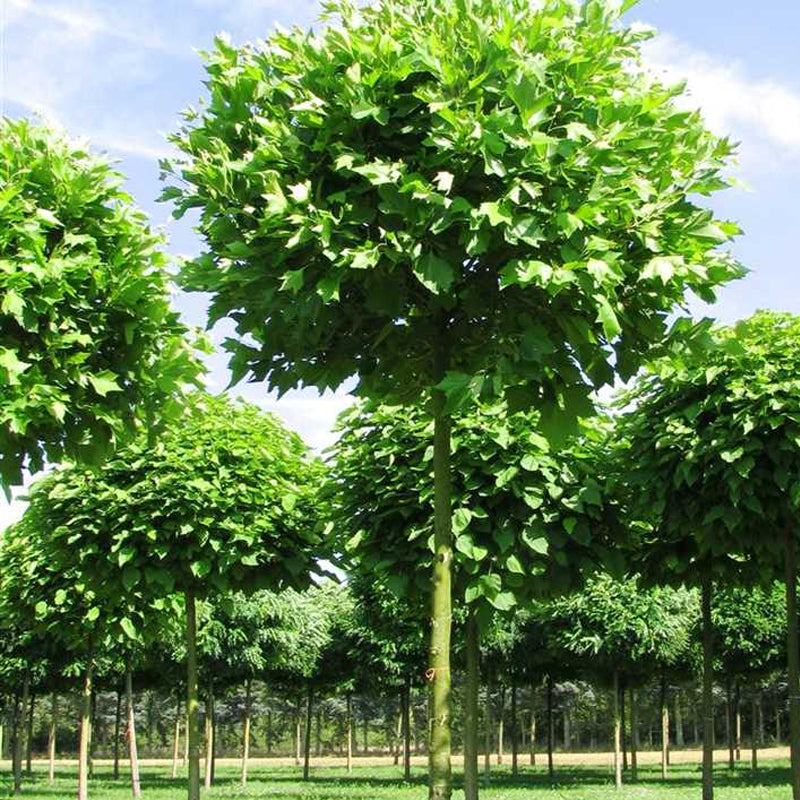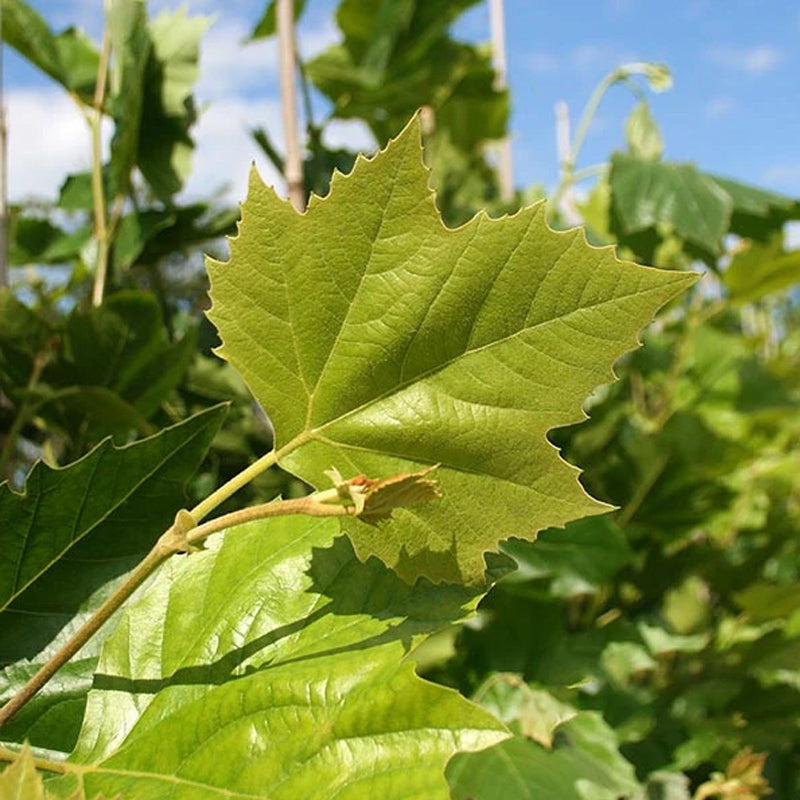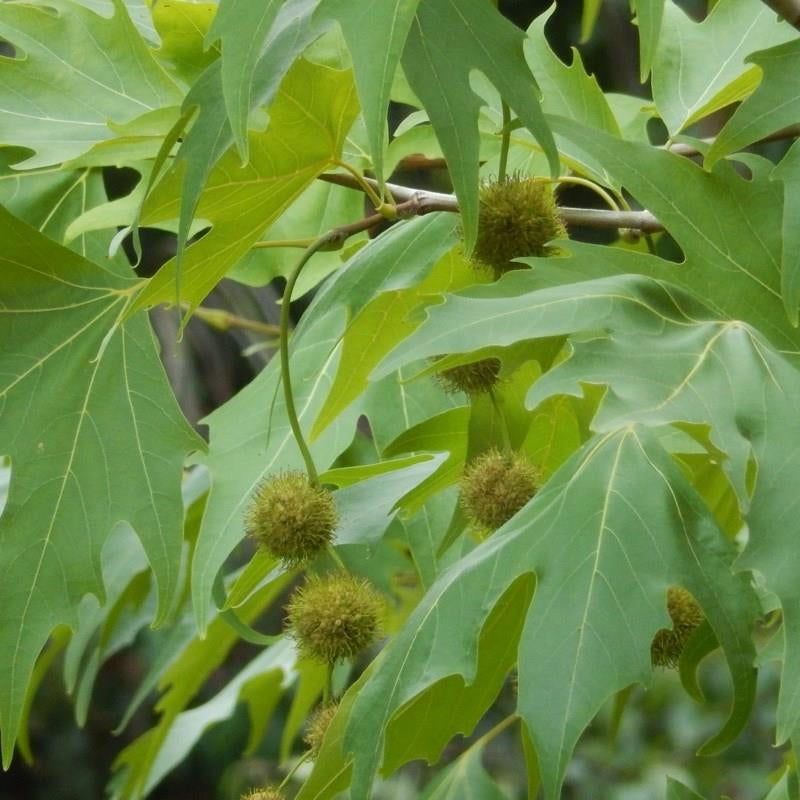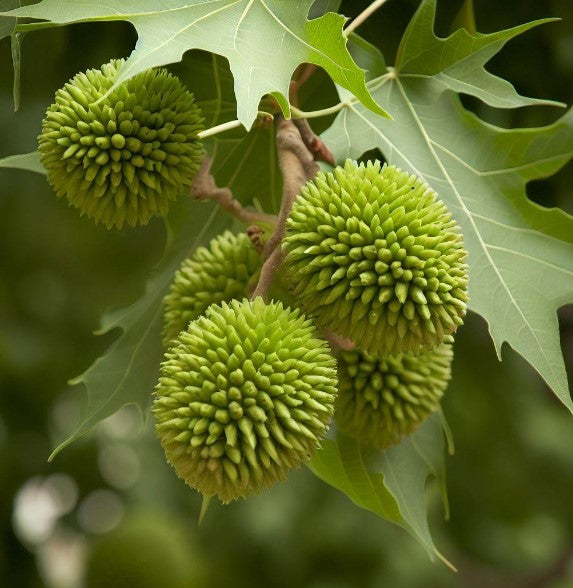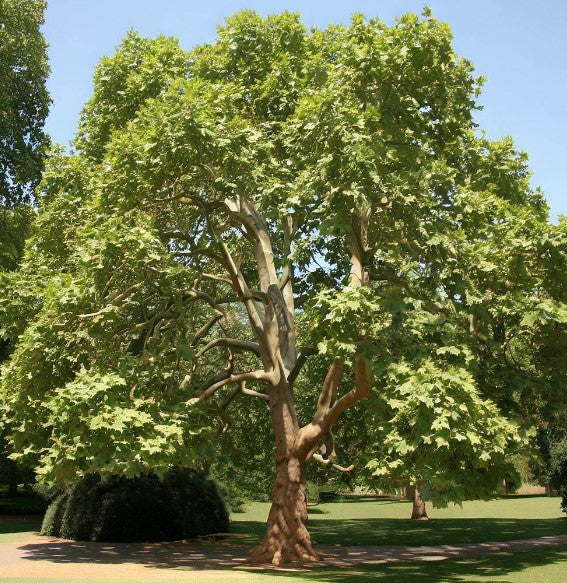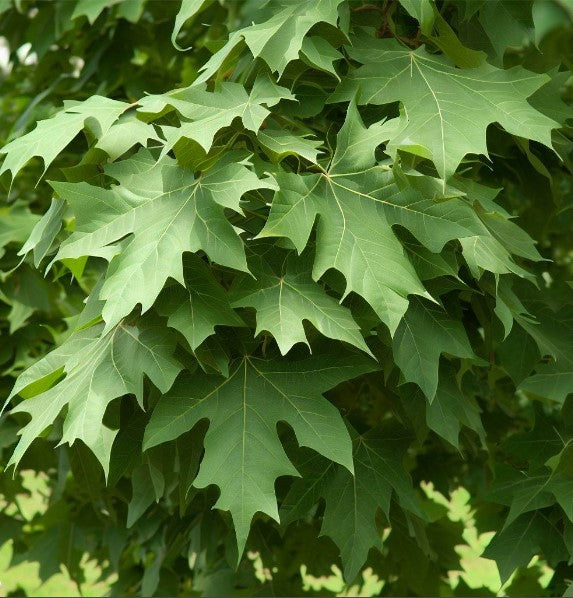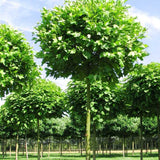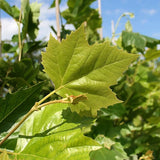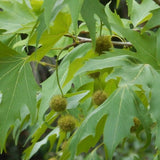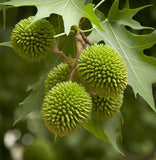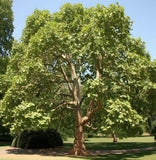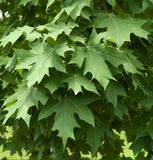Platanus acerifolia c.s. (London Plane Tree)
Platanus acerifolia c.s. (London Plane Tree) is a large deciduous tree that is widely planted as an urban tree in many cities around the world. It is a hybrid species derived from a cross between the American Sycamore (Platanus occidentalis) and the Oriental Plane (Platanus orientalis). The London Plane Tree is valued for its adaptability, tolerance to urban conditions, and attractive appearance.
Size and Growth Habit: The London Plane Tree is a large tree that can reach heights of 20-30 meters (66-98 feet) or more. It has a broad, spreading canopy and a thick, sturdy trunk. The branches are usually horizontally spread and have a distinctive mottled bark.
Leaves: The leaves of Platanus acerifolia are large, palmately lobed, and resemble the leaves of the maple tree, which is why the species name includes "acerifolia" (meaning "maple-like leaves"). The leaves have three to five lobes with toothed margins. They are bright green in color during the growing season and turn yellow or brown in the autumn before falling.
Bark: The bark of the London Plane Tree is one of its most recognizable features. It has a smooth, light gray or cream-colored outer layer that peels away in irregular patches, revealing a lighter-colored inner bark. This exfoliating bark gives the tree a distinctive mottled appearance.
Flowers: The flowers of Platanus acerifolia are small and inconspicuous. They are borne in spherical clusters and appear in the spring before the leaves. The male and female flowers are separate, but both types are found on the same tree.
Fruits: The fruits of the London Plane Tree are small, spherical, and woody. They are borne in clusters and have a hairy appearance. The fruits persist on the tree through winter and are often referred to as "buttonballs" or "marbles."
Urban Tolerance: The London Plane Tree is highly valued as an urban tree due to its ability to tolerate various environmental stresses, including pollution, compacted soils, and drought. It is frequently planted along streets, in parks, and in other urban landscapes to provide shade and aesthetic beauty.
Conservation Status: Platanus acerifolia is not currently listed as a threatened or endangered species. However, it is important to promote sustainable planting practices and preserve the diversity of tree species in natural ecosystems.
Botanical Name : Platanus acerifolia c.s.
Common Name : London Plane Tree
Height : 75- 100 ft
Spread : 65- 75 ft
Germination Info : No pre-treatment required. .....
Hardiness zone : 4-8
Other inf0 : C.S. (Cleaned Seed)
Average seed per ounce : Approx. 12,500

